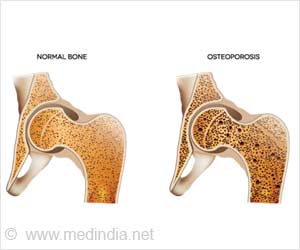
So, Dr Viggers and colleagues compared diabetes rates among those prescribed the osteoporosis drug alendronate with those not given the treatment.
Hospital records helped to identify all individuals with type 2 diabetes in Denmark between 2008 and 2018. Each diabetes patient was matched by age and sex with three healthy people from the population.
Prescription records were used to determine whether the participants had ever been prescribed alendronate.
The 163,588 patients with type 2 diabetes and 490,764 participants without diabetes had an average age of 67 and 55 per cent were male.
Results shown that those who had taken alendronate were 34 per cent less likely to have been diagnosed with type 2 diabetes than those who had never taken the drug. Factors such as smoking, alcohol use, obesity, income and marital status were included in the analysis.
Taking alendronate for at least eight years could down the risk by more than half compared to those who have never used alendronate.
The longer a person took the drug, the lower their odds of developing the condition.
READ RELATED: Family of Capitol hill attack suspect blame blows to head during football for mental illness
The study’s authors say that it isn’t clear how alendronate reduces the risk of developing type 2 diabetes. One theory is that the drug reduces low-grade inflammation and oxidative stress, two processes thought to be central to the development of insulin resistance.
It isn’t known if other osteoporosis medicines have the same effect.
Dr Viggers adds: “Type 2 diabetes is a serious lifelong condition that can lead to other serious health issues such as stroke, heart disease, blindness and limb amputation and anything that prevents, or even delays it, will also reduce a person’s risk of all these other conditions.
“Excitingly, our research suggests that alendronate, an inexpensive medicine widely used to treat osteoporosis, may also protect against type 2 diabetes.
“We believe that doctors should consider this when prescribing osteoporosis drugs to those with pre-diabetes or at high risk of type 2 diabetes.”
Source: Medindia
Source:






